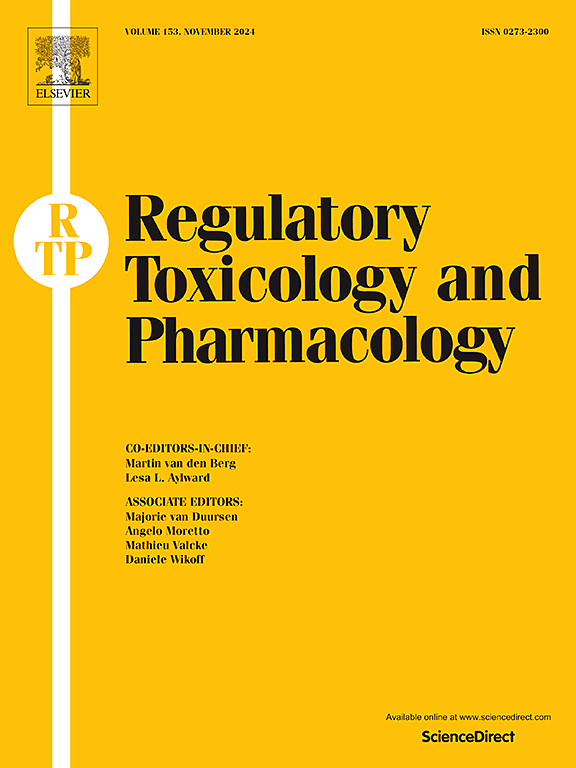评论:了解 IARC 的 PFOA 和 PFOS 致癌性评估。
IF 3
4区 医学
Q1 MEDICINE, LEGAL
引用次数: 0
摘要
2023 年 11 月,国际癌症研究机构(IARC)将全氟辛烷磺酸列为 "对人类致癌"(第 1 类),将全氟辛烷磺酸列为 "可能对人类致癌"(第 2B 类)。我们对这些分类进行了评估,考虑了流行病学、实验动物和机理证据。我们认为,国际癌症研究机构工作组夸大了 PFOA 和 PFOS 致癌的现有证据。流行病学研究表明,不同研究之间的关联性较弱且不一致。报告暴露于全氟辛烷磺酸或全氟辛烷磺酸的实验动物肿瘤发病率增加的研究,其结果在统计学上具有显著意义,这是因为良性腺瘤的存在。国际癌症研究机构工作组采用致癌物关键特征(KCCs,由已知人类致癌物的 10 种化学和/或生物特性组成)的方法,将 PFOA 和 PFOS 的致癌性分类从最初的较低分类升级,而最初的较低分类是基于流行病学和实验动物证据的强度。然而,这并不是对机理证据的有力评估,因为它没有考虑证据的质量、外部有效性和相关性。国际癌症研究机构不应将 KCCs 用作潜在致癌机制的核对表,而应使用严格的方法来评估机理证据的合理性和与人类的相关性。本文章由计算机程序翻译,如有差异,请以英文原文为准。
Commentary: Understanding IARC's PFOA and PFOS carcinogenicity assessments
In November 2023, the International Agency for Research on Cancer (IARC) classified PFOA as “carcinogenic to humans” (Group 1) and PFOS as “possibly carcinogenic to humans” (Group 2B). We evaluated these classifications, considering the epidemiology, experimental animal, and mechanistic evidence. It is our opinion that the IARC Working Group overstated the available evidence for the carcinogenicity of PFOA and PFOS. Epidemiology studies have shown weak and inconsistent associations across studies. Studies reporting increased incidences of tumors in experimental animals exposed to PFOA or PFOS had statistically significant results that were driven by the presence of benign adenomas. The IARC Working Group used the key characteristics of carcinogens (KCCs, which comprise 10 chemical and/or biological properties of known human carcinogens) approach to upgrade the carcinogenicity classifications for PFOA and PFOS from initially lower classifications that were based on the strength of the epidemiology and experimental animal evidence. However, this is not a robust assessment of mechanistic evidence, as it fails to consider the quality, external validity, and relevance of the evidence. Rather than use the KCCs as a checklist of potential carcinogenic mechanisms, IARC should use a rigorous method to evaluate the plausibility and human relevance of mechanistic evidence.
求助全文
通过发布文献求助,成功后即可免费获取论文全文。
去求助
来源期刊
CiteScore
6.70
自引率
8.80%
发文量
147
审稿时长
58 days
期刊介绍:
Regulatory Toxicology and Pharmacology publishes peer reviewed articles that involve the generation, evaluation, and interpretation of experimental animal and human data that are of direct importance and relevance for regulatory authorities with respect to toxicological and pharmacological regulations in society. All peer-reviewed articles that are published should be devoted to improve the protection of human health and environment. Reviews and discussions are welcomed that address legal and/or regulatory decisions with respect to risk assessment and management of toxicological and pharmacological compounds on a scientific basis. It addresses an international readership of scientists, risk assessors and managers, and other professionals active in the field of human and environmental health.
Types of peer-reviewed articles published:
-Original research articles of relevance for regulatory aspects covering aspects including, but not limited to:
1.Factors influencing human sensitivity
2.Exposure science related to risk assessment
3.Alternative toxicological test methods
4.Frameworks for evaluation and integration of data in regulatory evaluations
5.Harmonization across regulatory agencies
6.Read-across methods and evaluations
-Contemporary Reviews on policy related Research issues
-Letters to the Editor
-Guest Editorials (by Invitation)

 求助内容:
求助内容: 应助结果提醒方式:
应助结果提醒方式:


